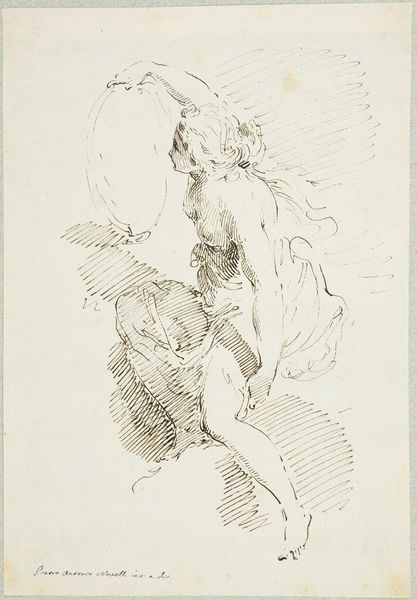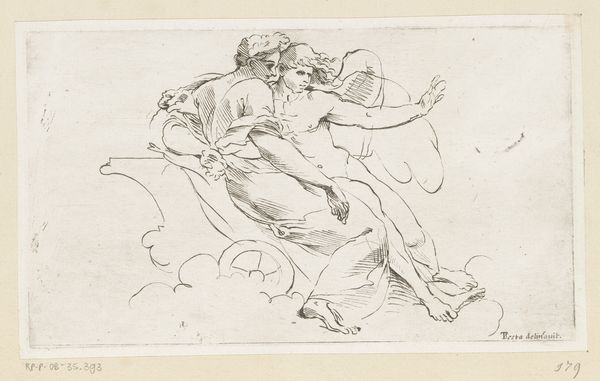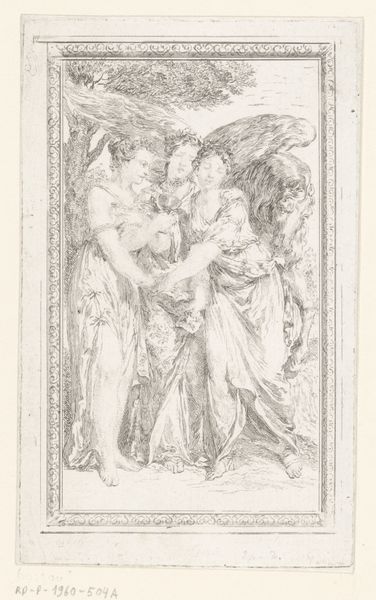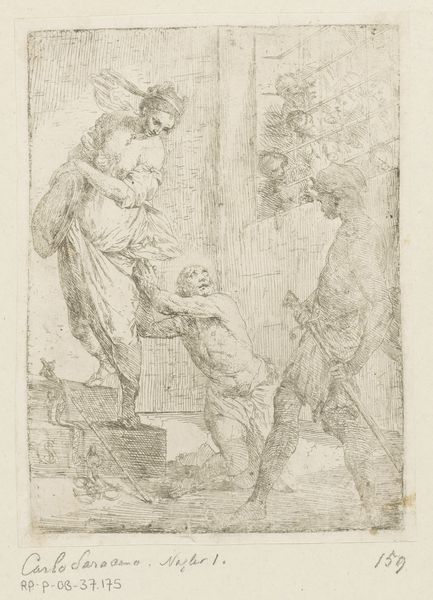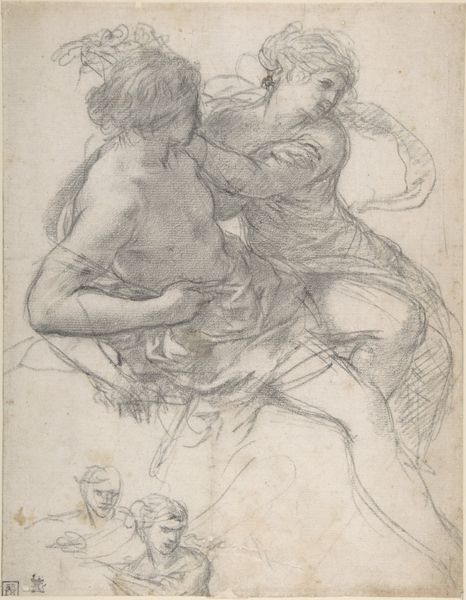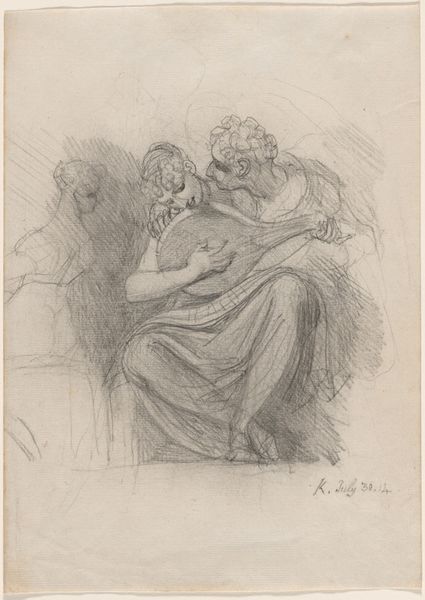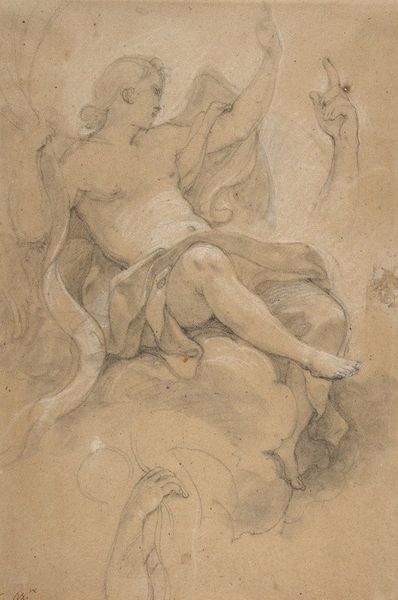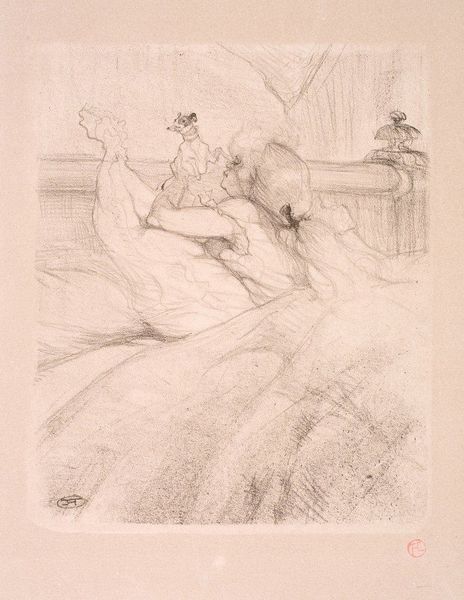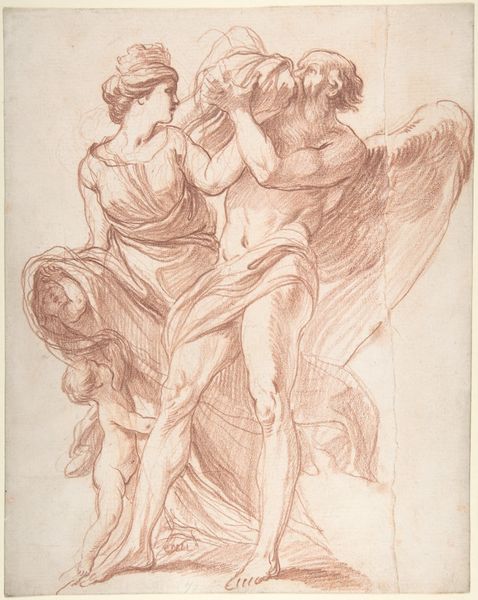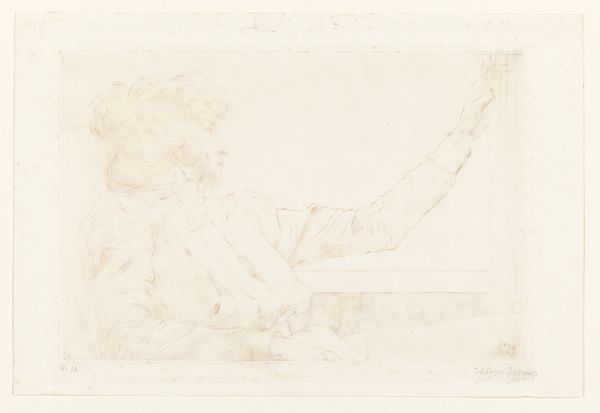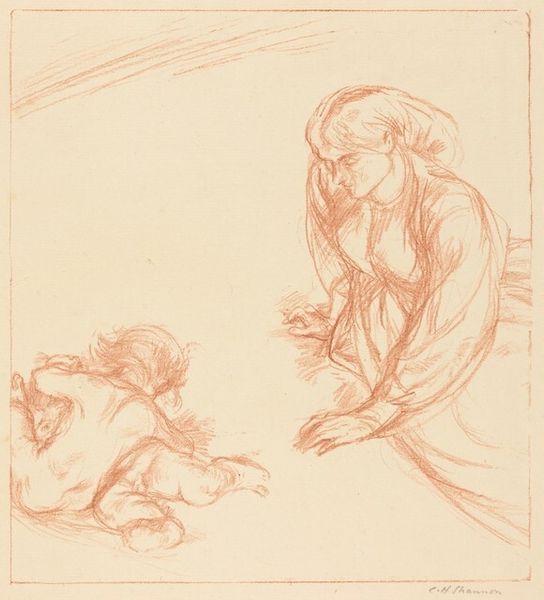
Copyright: Public Domain: Artvee
Curator: Looking at this pencil drawing by Lawrence Alma-Tadema, made around 1910 and titled "A Dance in Spring", my first impression is… fleeting. Like a dream half-remembered. Editor: That's interesting. It strikes me as an image of controlled celebration. Note how Alma-Tadema uses classical imagery - the flowing robes, the hint of marble architecture - to subtly frame these figures, presumably women or young girls, in what appears to be a private, possibly ritualistic dance. Curator: Ritualistic, perhaps. But also deeply personal, wouldn't you say? There’s a delicacy in the pencil work, almost a hesitancy. Like he’s trying to capture something impossibly ephemeral – youth, joy, the sheer vibrancy of spring. Editor: True, the soft lines lend it a certain gentleness. It reminds me how Alma-Tadema and his contemporaries were both celebrated and later critiqued for their romanticized visions of the classical world, often omitting its inherent inequalities. Here, though, it feels more allegorical. It becomes a symbol, divorced from a specific place and time, perhaps commenting on societal ideals of innocence and beauty. Curator: Possibly. I tend to see it as more immediate than that. It's as if he stumbled upon a secret and sketched it quickly, trying not to break the spell. I can almost hear the rustle of fabric, the barely-there whisper of laughter. And to consider these ideals is perhaps only natural, like springtime! It makes me think about my own childhood, about the dances we made up in the backyard… Editor: Memory playing tricks with reality? Absolutely, art often functions as that mirror, reflecting not just the world, but our own interpretations. "A Dance in Spring", more than just an exercise in classical revivalism, presents us with the opportunity to reconsider the enduring appeal and, indeed, the potential limitations of idealized representations of youth. Curator: It makes one wonder, what version of ourselves will history remember us by? Editor: Exactly! Alma-Tadema prompts us to remember our memories are mediated experiences of a past ideal.
Comments
No comments
Be the first to comment and join the conversation on the ultimate creative platform.

